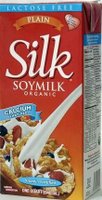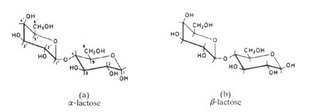Halloween Horror! Lactose Bacteria Mutating in Your Colon!
The bacteria that eat the undigested lactose that the reaches the colon are a special breed, so to speak. And that helps explain why a colony of good bacteria - the type that digests lactose - or a colony of bad bacteria - the type that ferments lactose - can take hold so quickly.
Anneli Waara writes about this is an article called "Mass copying of genes speeds up evolution" on Innovations.Report.de.
The research should be found in the latest issue of PNAS, Proceedings of the National Academy of Sciences, but I didn't see the proper article there. I'll try to find it for you and edit it in.
Waara said:
“When the bacterium’s gene for making use of lactose is inefficient, that is, when the bacterium has an ineffective enzyme for breaking down lactose, mutant bacteria are favored instead, with up to a hundred-fold rise in the number of copies of the gene,” says Professor Dan Andersson, one of those behind the study.
This has two consequences: on the one hand, the bacterium manages to grow on lactose because the amount of the inefficient enzyme increases and, on the other hand, the chances increase that the bacterium will develop a mutation in one of these 100 identical genes leading to an improvement in the enzyme function. The scientists also show that amplification proceeds stepwise: first, a large region is duplicated and then smaller regions within that region are amplified to high numbers of copies. According to Dan Andersson, it is probably much more common than was previously thought, which is extremely exciting.
“And they are important, since this means that evolutionary changes can take place at a considerably higher speed. One reason the extent of this has been underestimated is their inherent instability, which makes them difficult to study in laboratory experiments.”
They're evolving right before our eyes, er, below our eyes. Somewhat out of sight of our eyes, to be precise. But they just might solve puzzles about changes in other genes. It's not just gas, then; it's progress.







